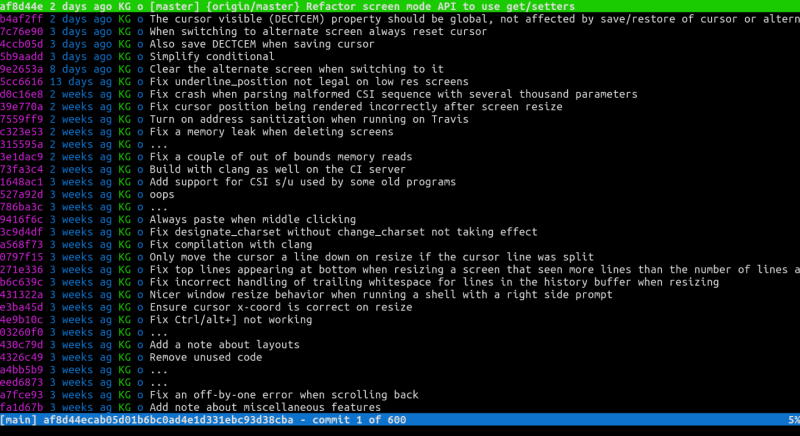
- #Iterm scroll beyond last line how to
- #Iterm scroll beyond last line software
- #Iterm scroll beyond last line code
Make sure we have enough space to draw the progress bars! This is done by writing "\n" * count when the function starts. In this snippet, we have to do several things we did not do earlier: # Randomly increment one of our progress values While any(x < 100 for x in all_progress): ("\n" * count) # Make sure we have space to draw the bars We could even use the Up and Down cursor movements to let us draw multiple progress bars at once: import time, sys, random This works as you would expect: every iteration of the loop, the entire row is erased and a new version of the ASCII bar is drawn.
#Iterm scroll beyond last line code
Each code from 0 to 255 corresponds to a particular color. Here we use instead of print so we can print multiple items on the same line, but otherwise it's pretty self-explanatory. To begin with, let's start off with a plain-old vanilla Python prompt:
#Iterm scroll beyond last line how to
This post will explore the basics of what Ansi escape codes exist, and demonstrate how to use them to write your own interactive command-line from first principles: Nevertheless, it's possible to write programs that make use of ANSI escape codes, and at least will work on common Unix systems like Ubuntu or OS-X (though not Windows, which I won't cover here and is its own adventure!).

Wikipedia has a reasonable listing of them, as do many other sites. Various terminals support different subsets of these codes, and it's difficult to find a "authoritative" list of what every code does.
These are special codes that your program can print in order to give the terminal instructions. The way that most programs interact with the Unix terminal is through ANSI escape codes. If you enjoyed the contents on this blog, you may also enjoy Haoyi's book Hands-on Scala Programming
#Iterm scroll beyond last line software
This post will explore the basics of how you can control the terminal from any command-line program, with examples in Python, and how your own code can directly make use of all the special features the terminal has to offer.Ībout the Author: Haoyi is a software engineer, and the author of many open-source Scala tools such as the Ammonite REPL and the Mill Build Tool. There are libraries like Readline, JLine, or the Python Prompt Toolkit that help you do this in various programming languages, but you can also do it yourself.

This is what lets programs like Git implement its dynamic progress indicators, and Vim or Bash implement their editors that let you modify already-displayed text without scrolling the terminal.

Strategic Scala Style: Designing Datatypes Scala Scripting and the 15 Minute Blog EngineĮveryone is used to programs printing out output in a terminal that scrolls as new text appears, but that's not all your can do: your program can color your text, move the cursor up, down, left or right, or clear portions of the screen if you are going to re-print them later.


 0 kommentar(er)
0 kommentar(er)
